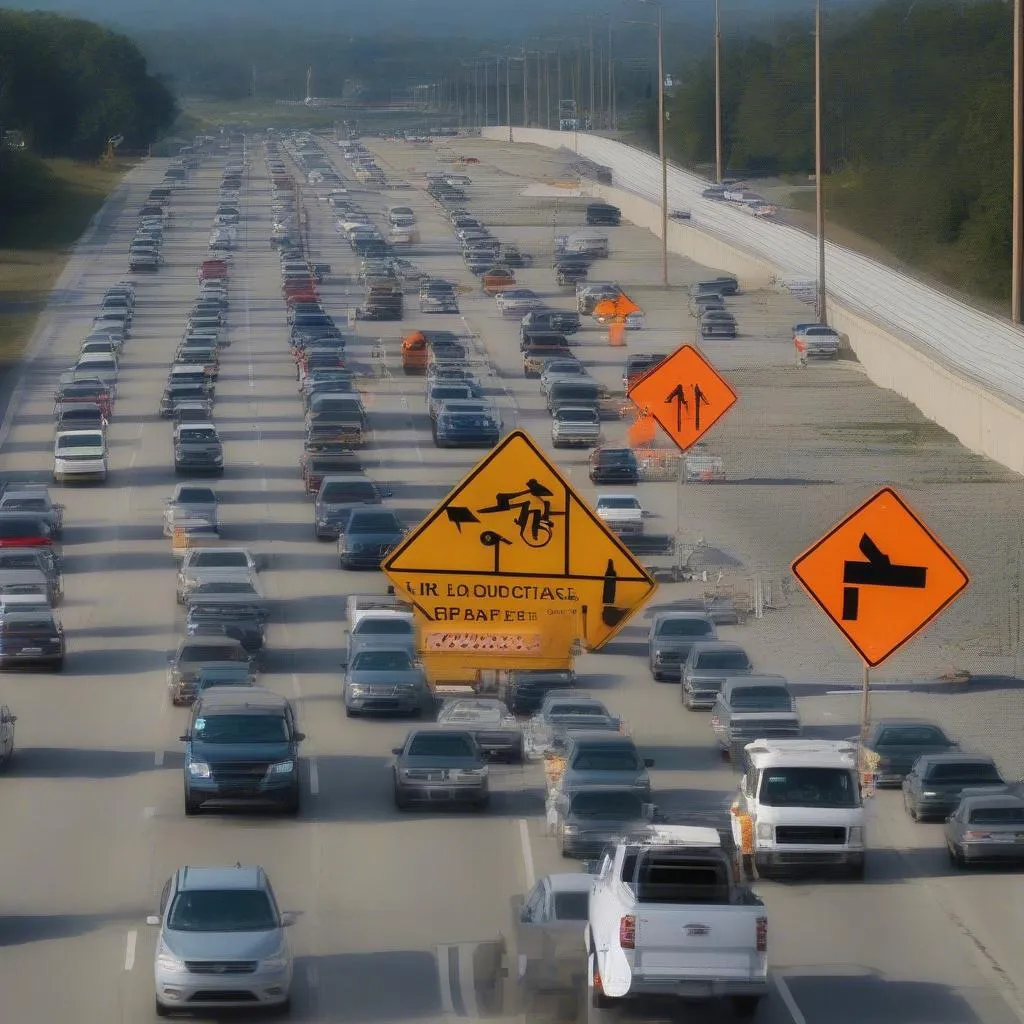Remember that epic road trip you always dreamed of, cruising down scenic highways with the wind in your hair? Now imagine that dream turning into a nightmare, stuck in traffic because you didn’t check the road conditions beforehand. 😩
Don’t let that happen! Planning a road trip is exciting, but ensuring a safe and enjoyable journey starts with knowing what to expect on the roads. This comprehensive guide will equip you with all the tools and knowledge to check road conditions like a pro, so you can focus on making memories, not navigating detours.
Why Checking Road Conditions is Non-Negotiable
Before we dive into the “how,” let’s understand the “why.” Imagine this: you’re driving through the Scottish Highlands, captivated by the rugged beauty, and suddenly, you encounter an unexpected road closure due to a landslide. Knowing about potential hazards, construction, or weather-related delays beforehand can save you time, stress, and potentially keep you safe.
Think of checking road conditions as an essential part of your pre-trip ritual, like packing your bags or booking accommodation. It’s always better to be informed and prepared than surprised and stranded.
How To Check The Roads For Travel: Your Toolkit for a Seamless Trip
1. Real-Time Traffic and Navigation Apps
In today’s digital age, information is readily available at your fingertips. Several excellent traffic and navigation apps provide real-time updates on road conditions, accidents, and estimated travel times.
- Google Maps: A household name, Google Maps offers accurate traffic information, alternative routes, and even estimated delays based on live traffic flow.
- Waze: Known for its community-based reporting, Waze relies on user input to provide real-time updates on accidents, speed traps, and road hazards.
- Apple Maps: For Apple users, Apple Maps offers seamless integration with iOS devices, providing traffic conditions, turn-by-turn navigation, and estimated travel times.
Pro Tip: Input your destination and travel time in these apps before you leave to get a sense of the current road conditions and plan your departure accordingly.
2. Government Transportation Websites
For the most up-to-date and official information on road closures, construction, and weather-related advisories, bookmark the website of the Department of Transportation in the state or country you’ll be traveling through.
For example, if you’re planning a road trip through Arizona, check the Arizona Department of Transportation (ADOT) website for real-time traffic updates and road closure information.
Expert Insight: “Government transportation websites are your go-to resource for accurate and reliable information on road conditions,” says travel expert Jane Miller, author of “The Savvy Traveler’s Guide to Road Trips.” “These websites provide the most up-to-date information directly from the source.”
3. Local Radio Stations
Remember the good old radio? It’s still a valuable resource for travelers, especially for local traffic updates and weather reports. Tune in to local radio stations along your route to stay informed about any unexpected road closures or delays.
4. Roadside Assistance Services
If you’re a member of AAA or a similar roadside assistance service, don’t hesitate to utilize their resources. They often provide up-to-date information on road conditions, traffic, and weather, along with valuable assistance in case of emergencies.
Pro Tip: Keep your roadside assistance contact information easily accessible in your car and on your phone.
 Traffic Jam on a Busy Highway
Traffic Jam on a Busy Highway
Planning a Scenic Drive? Incorporating Feng Shui for a Harmonious Journey
In many cultures, embarking on a journey is seen as more than just physically moving from one place to another; it’s an opportunity for growth, reflection, and connecting with the energy of the surroundings.
Feng Shui, the ancient Chinese practice of harmonizing individuals with their environment, offers insightful principles that can enhance your travel experiences.
- Choose Scenic Routes: Opt for roads that wind through picturesque landscapes, allowing the beauty of nature to invigorate your senses and promote a sense of peace and tranquility.
- Embrace Natural Elements: Incorporate the five elements of Feng Shui (wood, fire, earth, metal, and water) into your trip by visiting places that embody these elements. For example, hike through a forest (wood), relax by a lake (water), or explore a desert landscape (earth).
 Scenic Road Trip Through Mountain Pass
Scenic Road Trip Through Mountain Pass
Frequently Asked Questions (FAQs)
1. What is the best time to travel to avoid traffic?
While it depends on your location and the time of year, generally, weekdays during non-peak hours (early morning or late evening) tend to have lighter traffic than rush hour or weekends.
2. How often should I check road conditions during my trip?
It’s a good practice to check road conditions before you leave, every few hours during your trip, and especially before changing routes or entering a new region.
3. Can I rely solely on GPS for road conditions?
While GPS navigation systems are helpful, they may not always have the most up-to-date information on sudden road closures or accidents. It’s best to use a combination of resources for the most accurate picture.
Conclusion
Remember, a well-planned road trip starts with being prepared. By utilizing these tools and resources, you’ll be equipped to navigate the roads with confidence, avoid unnecessary delays, and enjoy a smooth and memorable journey. Safe travels!
Do you have any road trip essentials or tips for checking road conditions? Share them in the comments below! And for more travel tips and resources, be sure to visit us at travelcar.edu.vn.
